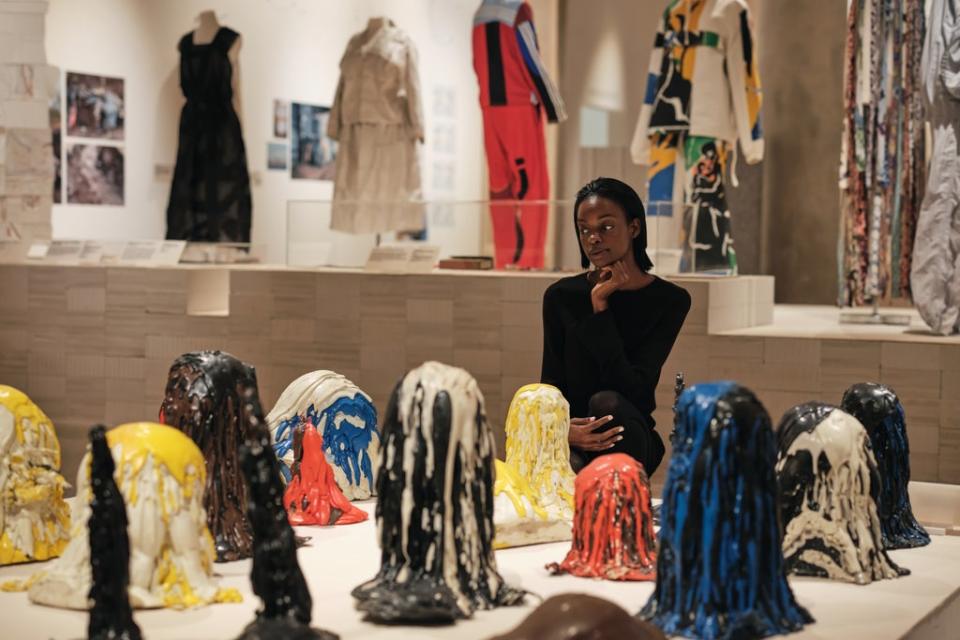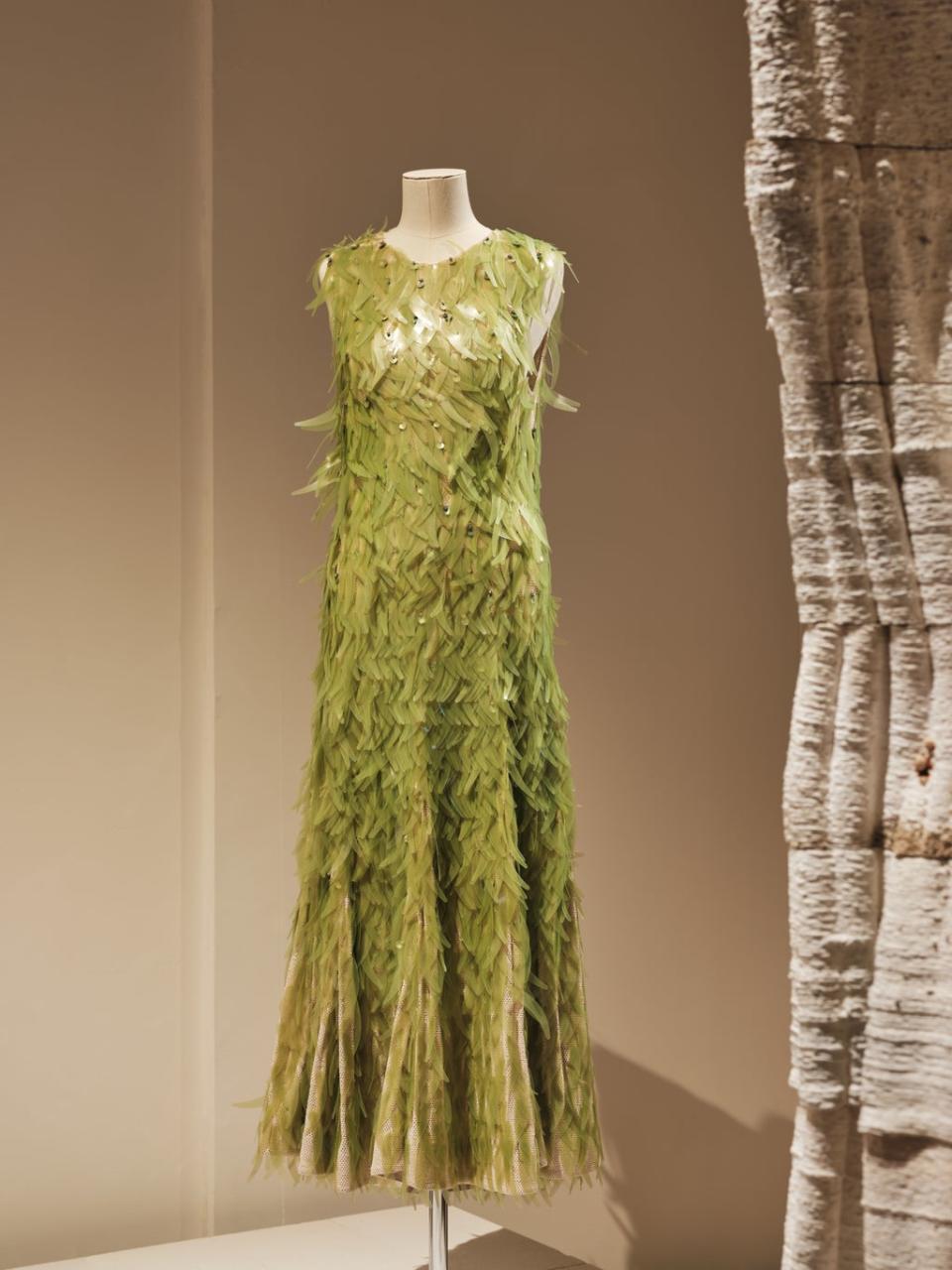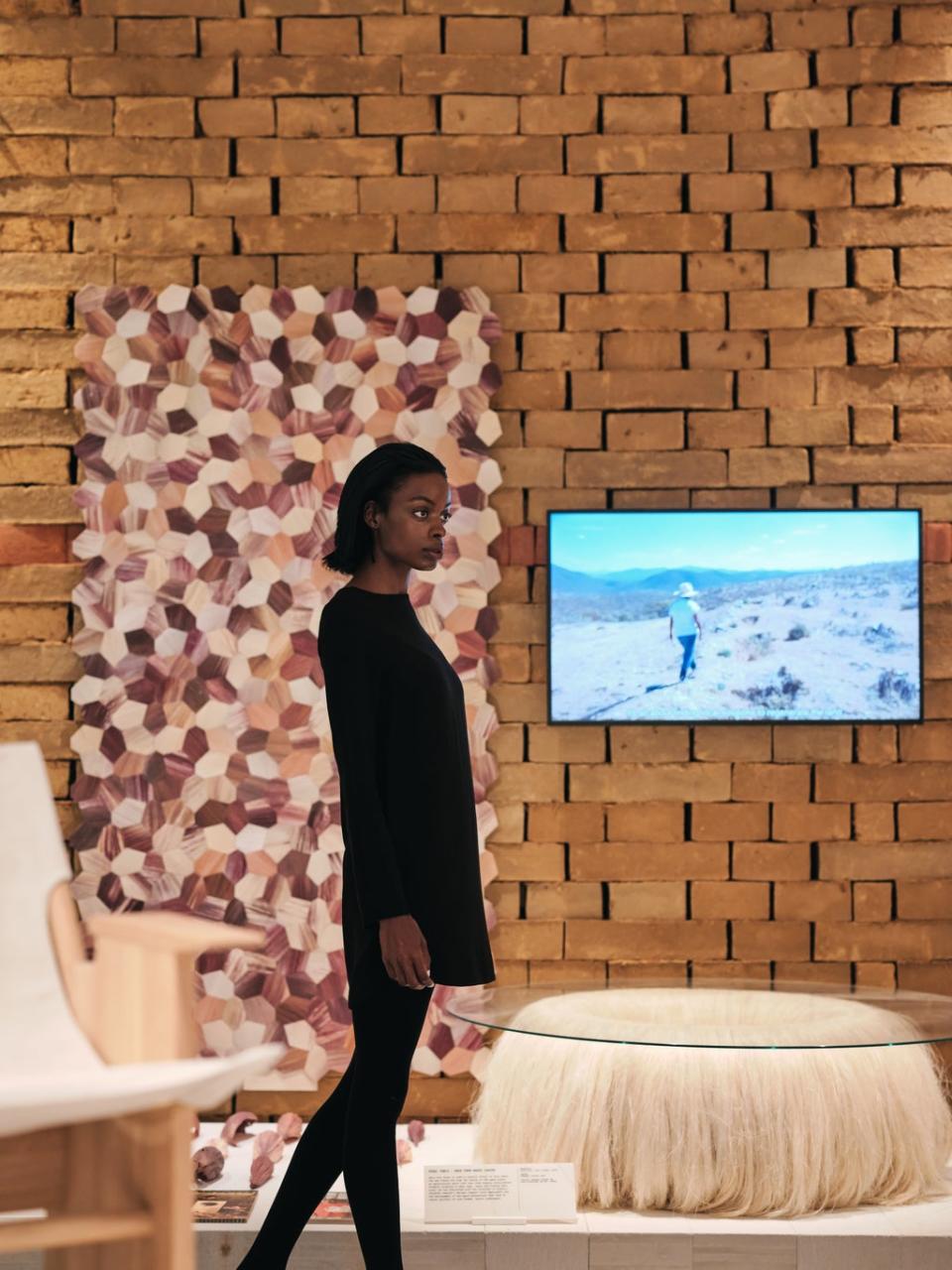Waste Age: What can design do? at the Design Museum review: can design save the planet?

Would you wear a dress made from algae? Or drink from a seaweed cup?
If you're rolling your eyes, the Design Museum's latest exhibition - Waste Age - might just change your mind.
The dress in question - a green, couture gown covered in translucent sequins - wouldn't look out of place on any red (or green) carpet. And the "Ello Jello" cups - colourful, single-use beakers designed to be eaten after finishing your drink - could be an ingenious party addition for the washing-up averse.
Waste Age focuses on the way "waste" materials can be utilised for climate-friendly designs. Those who might turn up their noses needn't worry - the designs here are not only satisfyingly clever, but appealingly beautiful. These aren’t tatty hand-me-downs - far from it - but aesthetically considered, thoughtful responses to the current climate crisis. The emphasis is not necessarily on restraint, or frugality, but finding exciting ways to reinvent the materials we already have, sparking the same kind of responses we might enjoy when buying something shiny and new.
With 80 per cent of a product’s environmental impact decided at the design stage, it's a pivotal moment for the industry. There’s a lot of soul-searching to be done to look at the materials we use, how we make things, and how we design to create a more circular approach to manufacturing. The exhibition itself was put together with this in mind - plinths have been reused from previous installations, and the internal architecture was constructed from biodegradable materials, with hopes of being used again in future shows.

But Waste Age nudges visitors along rather than pointing the finger, and the overwhelming tone is one of hope, not despondency, convincingly mirrored in the exhibition's arc. It's split into three sections - Peak Waste, Precious Waste, and Post Waste. Peak looks at the scale of the current problem through engagingly simple graphics and large-scale pieces, Precious looks at how materials can be fruitfully reused, and Post completes the loop by demonstrating some of the ingenious ways designers are now using degradable materials. "Designers are the new alchemists, looking not for gold but degradable materials," reads a quote on the wall - and when peering at fabric made from rice, walls made from corn husks, and coffee tables made from agave fibres, you'd be hard-pressed not to agree.

Of course, a few designs aren't quite as appealing. Ropes made from human hair, for instance, or a large tank of algae - a "Domestic Algae Garden," conceived as an alternative to houseplants - merrily bubbling away in the centre of the room. Noble, yes, but perhaps less likely to take hold than some of the other objects on display. (Though I may eat my words in 30 years.)
But most are fascinating, beautiful glimpses into a brave new world of design. An iPhone is split into its constituent materials, sculpted into neat cubes on the wall opposite a rainbow of repurposed floor vinyl. Tiles specked with milky shell fragments are presented as a use for fishing industry waste, while a colour-changing "Service Shirt," designed for a lifetime of wear, is a clever replacement for that "new-clothes-rush" we’re probably all guilty of. If this is what the future looks like, then it might not be so bad, after all.
Design Museum, to February 20, designmuseum.org
Read More
James Bond to bananas: Docklands celebrated in Museum of London show
Plans announced for post-Brexit festival of creativity
Diane Abbott backs schools’ boycott of museum over slavery statue row

 Yahoo Movies
Yahoo Movies 